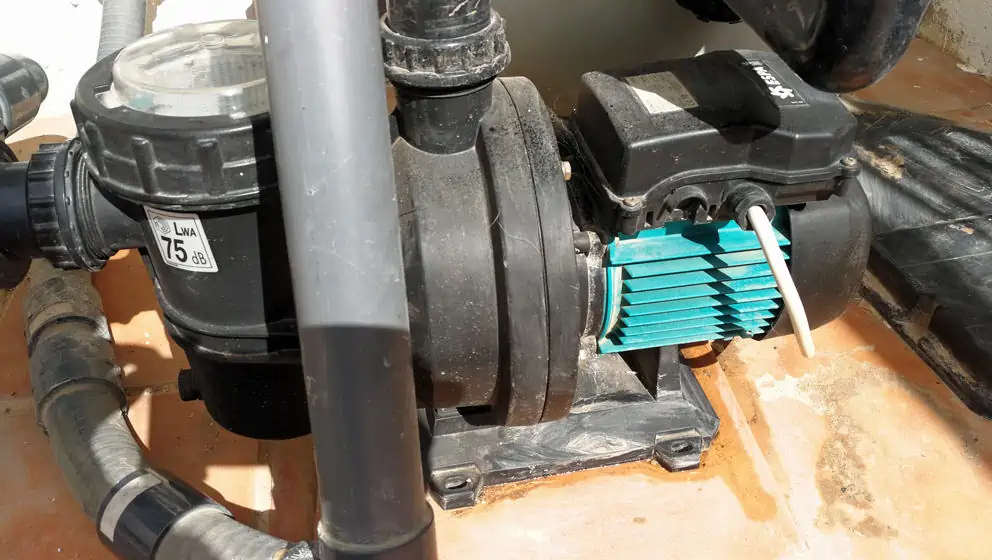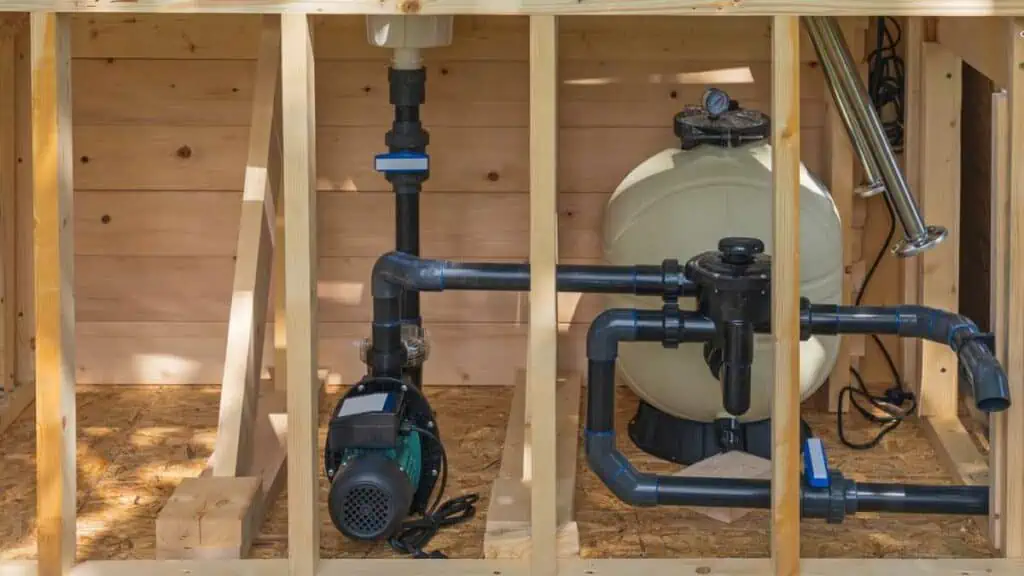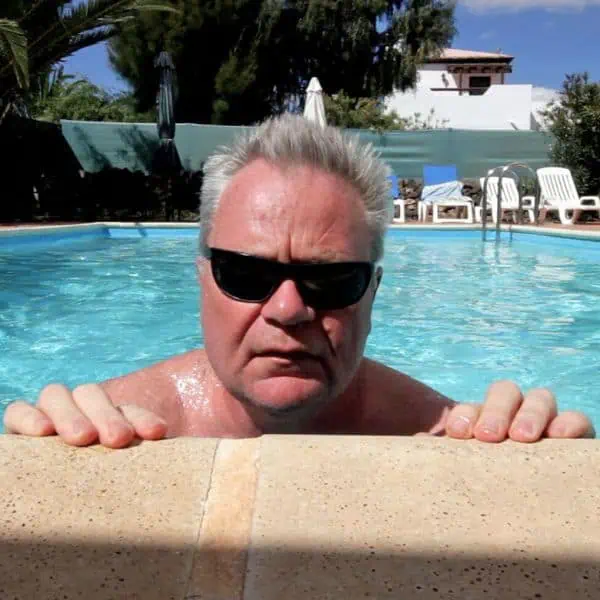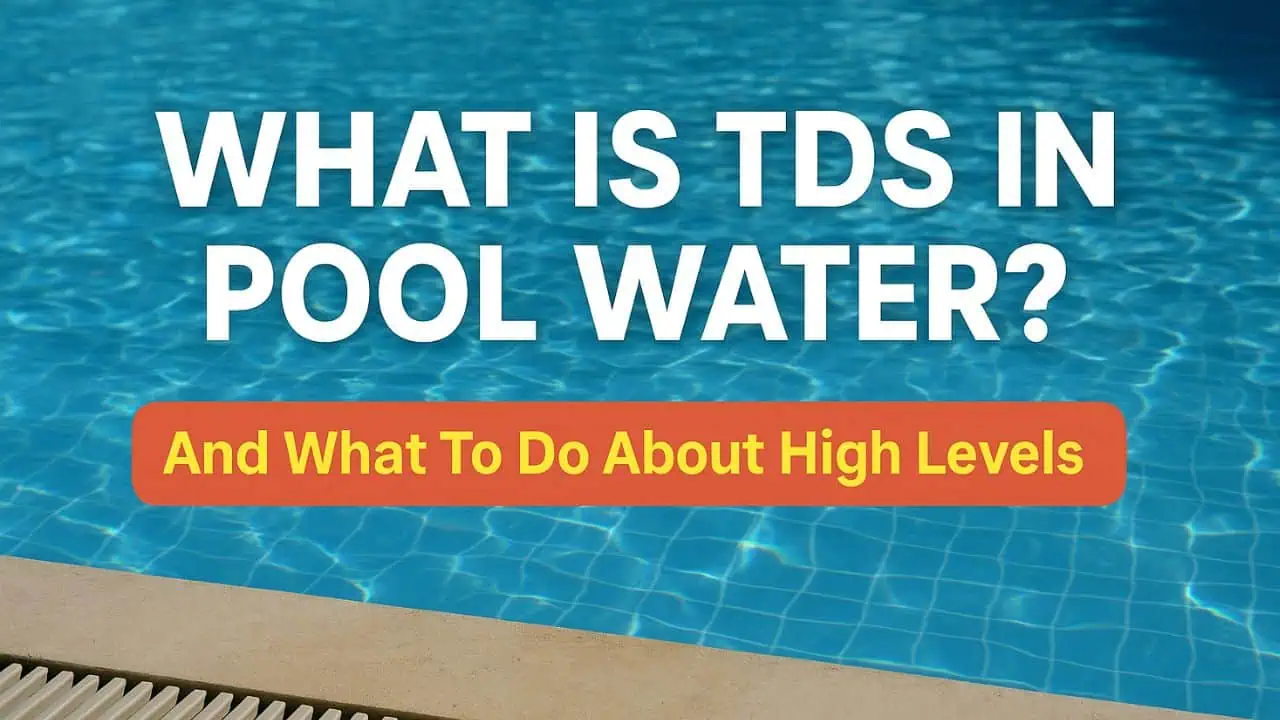Pool pumps are vital components of any swimming pool, as they play a crucial role in maintaining water circulation and cleanliness. However, like any mechanical device, pool pumps are susceptible to wear and tear, and various factors can significantly impact their lifespan.
To ensure your pool pump remains in optimal condition, follow some simple maintenance tips and practices.
In this article, I provide the top 5 ways to extend the life of your pool pump. These tried-and-true methods not only prolong the pump’s life but can also save you money on repair bills and even reduce energy consumption.

Top 5 Ways to Extend Your Pool Pump’s Life
1. Keep it Cool: Proper air circulation around your pool pump prevents overheating. Pool pump overheating can lead to a shorter lifespan and malfunctions. To ensure adequate airflow, avoid placing the pump near plants, mulch, or enclosed spaces that could obstruct air circulation. Also, try to prevent direct sunlight exposure and place the pump in a shaded area.
2. Choose the Right Size Pump: Purchasing a pump suitable for your pool’s size is essential for preventing overworking and ensuring a longer lifespan. A correctly sized pump can handle the water circulation load more efficiently, reducing stress on the motor and wear on the pump. For even better energy efficiency and adjustable performance, consider a variable-speed pump.
3. Clear Debris: Additionally, monitoring and cleaning the pool pump impeller and housing can prevent strain on the motor caused by debris obstruction.
4. Prevent Pool Pump Running Dry: Ensuring your pool pump is never dry is crucial for extending its life. Running dry creates excess heat and can damage components. Make sure to maintain proper water levels in your pool so that the pump can function efficiently and avoid unnecessary wear. When you first start the pump, it may run dry for a minute or two while the air clears—this will not detrimentally affect the pump.
5. Use a Timer: Implementing a timer for your pool pump can help prolong its life by reducing run time and regulating usage. A timer allows you to optimize your pump’s schedule, ensuring it’s active during off-peak hours and turned off when unnecessary. This can help to extend the pump’s lifespan, save energy, and reduce overall pool maintenance costs.
Proper Installation and Maintenance

Proper installation and maintenance play a vital role in extending the lifespan of your pool pump. This section will cover important aspects such as choosing the correct size, regularly cleaning and inspecting the pump, and lubricating and tightening parts.
Choose the Correct Size
Selecting the right size pool pump is crucial for optimal performance and efficiency. A pump that is too small will struggle to circulate water effectively, leading to increased wear and tear, while a pump that is too large can consume more energy than necessary.
To determine the correct size for your pool, consider factors such as pool volume, filter size, and piping dimensions. Consult the pump manufacturer’s guidelines or seek professional advice to ensure you choose the ideal size.
Regularly Clean and Inspect the Pump
Regular cleaning and inspection of your pool pump can help identify potential issues before they worsen, thus prolonging its life. Some of the key areas to focus on include:
- Filter outlet pressure: Routinely check the filter outlet pressure, as low pressure could indicate blockages or malfunctions within the pump. If you have a sand filter, make sure you backwash it regularly.
- Water levels: Maintain proper water levels in your pool to avoid overworking the pump and causing damage.
- Pump basket: Remove debris and clean the pump basket at least once a month to ensure optimal water flow.
- Airflow: Keep the area around the pump clear of plants, mulch, and other obstructions that can restrict airflow and increase motor temperature.
You must also protect your pump from direct sunlight to prevent overheating, which can impact motor longevity.
Lubricate and Tighten Parts
Over time, pool pump components may become loose, and seals may lose effectiveness, leading to inefficiency or damage. To maintain your pool pump:
- Inspect seals and gaskets regularly and replace them as needed to prevent leaks or water damage.
- Lubricate moving parts according to the manufacturer’s instructions to minimize friction and wear. Be sure to use the correct lubricant specified by the manufacturer.
- Check and tighten any loose bolts, screws, or fasteners to avoid pump vibrations that can cause additional stress to the pump components.
Regular maintenance tasks will help ensure your pool pump functions efficiently and lasts longer.
Efficient Use and Energy Savings
As a responsible pool owner, using your pool pump efficiently and making energy-saving choices can extend its life and reduce operational costs. This section will discuss the benefits of installing a variable speed pump and optimizing running time and speed for better efficiency.
Install a Variable Speed Pump
Variable-speed pool pumps are a smart choice for energy-conscious homeowners. These pumps can adjust their speed according to the pool’s demands, resulting in significant energy savings.
ENERGY STAR-certified in-ground pool pumps use 18% less energy than standard pool pumps and can save more than $300 a year in energy bills. Upgrading to a variable-speed pool pump also helps with energy efficiency and reduces noise levels and greenhouse gas emissions.
When selecting a pool pump, look for an ENERGY STAR-certified product such as the Blue Works pump above to ensure optimal performance and long-term savings. These pumps have been independently tested and verified to meet the highest energy efficiency and environmental protection standards.
As soon as my standard pump needs replacing, I will swap to a variable-speed pump.
Optimize Running Time and Speed
Another way to extend the life of your pool pump and save energy is by optimizing its running time and speed settings. Running the pump for the appropriate time and at the optimal speed ensures proper water circulation while using minimal energy.
Consider the following energy-saving tips to optimize your pool pump’s operation:
- Monitor water clarity and adjust pump running time as needed. A well-balanced pool with good water chemistry typically requires less circulation time.
- Run the pump during off-peak hours when electricity rates are lower, which can save you money on energy costs.
- Lower the pump speed during filtration cycles, as slower water flow rates improve filtration efficiency and reduce energy consumption.
Protecting the Pool Pump
Proper pool pump protection is essential to extending its life and ensuring optimum performance. This section will discuss two important aspects of pool pump protection: using a pump cover and keeping it free from debris and obstructions.
Use a Pump Cover
Using a pool pump cover effectively shields the equipment from harsh weather conditions, such as rain, snow, and direct sunlight. It can also help prevent damage caused by debris, such as leaves and twigs, that may enter the pump motor.
A high-quality pump cover should have the following characteristics:
- Weather-resistant material: Ensure your pump cover is made from a durable and weather-resistant material, such as vinyl or heavy-duty fabric, which can protect your pump from the elements.
- Secure fasteners: The cover should feature fasteners, such as Velcro or zippers, to keep it securely in place and prevent it from being blown away by strong winds or heavy rain.
- Ventilation: A well-ventilated cover provides adequate airflow to prevent overheating and helps maintain the pump motor’s efficiency.
Keep it Free from Debris and Obstructions
Pool pump motors require proper air circulation to stay cool and function effectively. Keeping the area around your pool pump clean and debris-free will ensure the motor gets the required airflow to prevent overheating. Here are some steps you can take to maintain a clean environment around your pump:
- Regularly inspect the surrounding area: Check for plants, mulch, or other objects blocking the pump motor’s air circulation. If necessary, trim or remove any obstructions.
- Consider the pump’s location: Avoid placing the pool pump near plants, mulch, or enclosed spaces because these can obstruct airflow. If possible, relocate the pump to an open area to maximize air circulation.
- Clean the pump and filter: Regularly clean the pool pump impeller and empty the pump basket and filter to ensure smooth and efficient water circulation.
Following these precautionary measures, you can protect your pool pump, maintain its efficiency, and extend its lifespan.
Replacing Parts as Needed
Extending your pool pump’s lifespan involves timely replacing worn-out components. Regularly inspecting and changing parts such as the motor, seals, and gaskets is vital to maintaining the pump’s efficiency and longevity.
Replace the Motor when Necessary
Your pool pump’s motor is one of its most critical components. If the motor malfunctions or is nearing the end of its lifespan, it is essential to replace it before it causes further damage to the pump. The average pool pump motor lasts approximately 8 to 12 years.
To identify signs of motor wear, listen for abnormal noises and check for excessive heat or vibration. A motor that frequently overheats or emits burning smells indicates it needs replacement. It is recommended that you consult with a pool professional to determine the appropriate time for motor replacement.
Change Worn Out Seals and Gaskets
Seals and gaskets are crucial in maintaining your pool pump’s optimal performance. They help prevent water leakage and ensure proper circulation. Over time, these components can become damaged or worn out, leading to air or water leaks that hinder pump performance.
To maintain the pump’s efficiency, regularly inspect and replace seals and gaskets as needed. Some signs that these parts need replacement include:
- Water leaks around the pump housing
- Air bubbles in the pool return lines
- A decrease in water pressure
If these symptoms are observed, promptly consult a pool service professional to assess the situation and replace the faulty seals or gaskets.
Conclusion
In summary, proper pool pump maintenance, placement, and usage can extend the life of a pool pump. By following the provided tips, you can maximize the efficiency and lifespan of your pool pump, reducing the need for costly replacements and ensuring a well-functioning pool system.







Leave a Reply